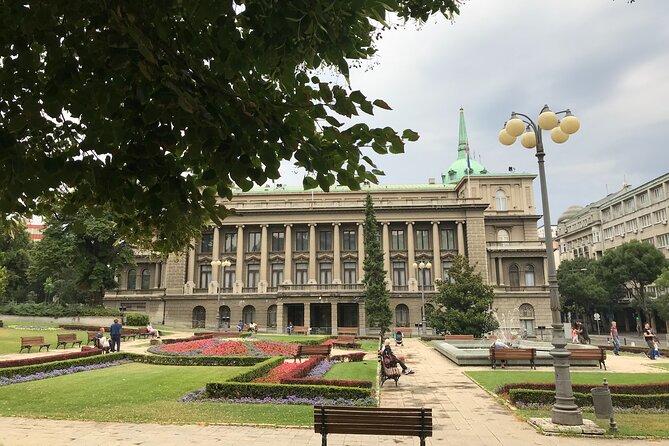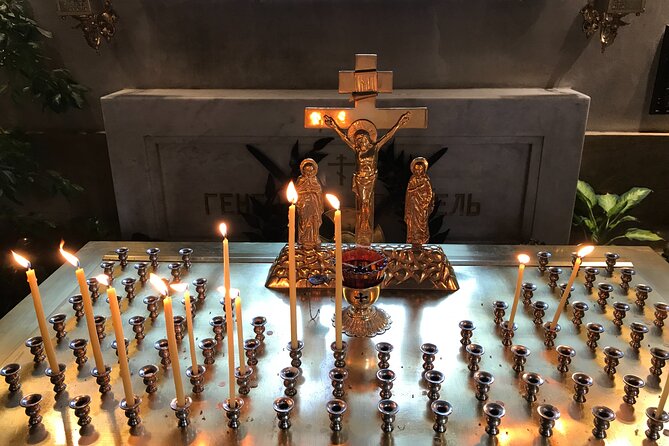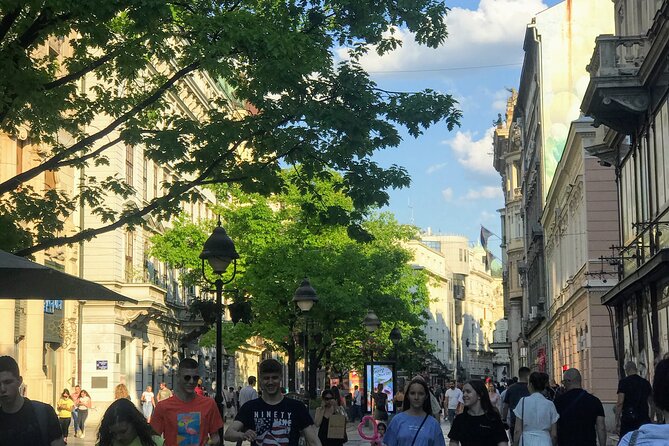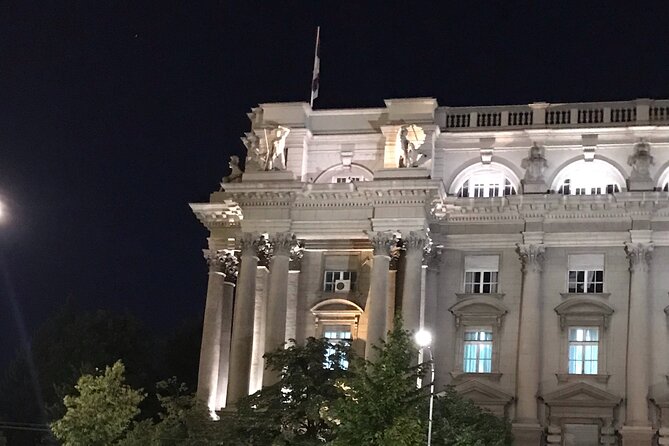The Russian Revolution of 1917 sent shockwaves across the globe, and its aftershocks were felt acutely in Belgrade. As the Bolsheviks tightened their grip on power, a wave of White Russian émigrés sought refuge in the Serbian capital, transforming it into a haven for the displaced aristocracy and intelligentsia. This influx of cultured individuals would leave an indelible mark on the city’s social fabric, kickstarting a cultural renaissance that would shape Belgrade’s identity for generations to come. What began as a flight from oppression would soon blossom into a vibrant community, one that would leave an architectural and culinary legacy still felt in the city today.
Key Points

-
Belgrade became a haven for White Russians fleeing the Bolshevik regime after the Russian Revolution, welcoming the educated and cultured émigrés.
-
The influx of Russian artists, intellectuals, and professionals enriched Belgrade’s cultural landscape, contributing to the city’s development.
-
Prominent White Russian figures, including military leaders and statesmen, found refuge in Belgrade and held influential positions in the local community.
-
The White Russian diaspora in Belgrade preserved their cultural identity through the hotel of schools, churches, and social institutions.
-
The architectural and culinary legacies of the White Russian émigrés left an indelible mark on Belgrade’s cityscape and Serbian culture.
Aftermath of the Russian Revolution
The Russian Revolution of 1917 turned the lives of countless individuals upside down, leading to a mass exodus of Russians from their homeland. Among them were the "White Russians," those who opposed the Bolshevik regime. Many found refuge in Serbia, which became a haven for the White Emigration.
These émigrés brought with them a wealth of cultural and intellectual resources, contributing to the vibrant social and artistic landscape of Belgrade. However, their presence also posed challenges, as the Serbian government grappled with the influx of refugees and the need to integrate them into society.
The aftermath of the revolution had a profound impact on both Russia and its neighbors, shaping the region’s political and social dynamics for years to come.
You can also read our reviews of more tours and experiences in Belgrade.
Belgrade’s Embrace of the Exiles

Embracing the White Russian émigrés with open arms, Belgrade became a haven for those fleeing the aftermath of the Bolshevik Revolution.
The Serbian capital welcomed the influx of educated, cultured Russians, who brought with them a wealth of talent and expertise. The émigrés established schools, churches, and cultural institutions, enriching Belgrade’s intellectual and artistic landscape.
Many found employment in the growing Serbian economy, contributing to its development. The Serbian government supported the refugees, recognizing the value they brought to the country.
Belgrade’s embrace of the exiled Russians solidified its reputation as a safe haven, attracting more émigrés seeking to rebuild their lives in the welcoming environment of the Serbian capital.
Prominent White Russian Figures

Among the prominent White Russian figures that found refuge in Belgrade were individuals who had held high-ranking positions in the former Russian Empire. These included General Pyotr Wrangel, the last commander-in-chief of the anti-Bolshevik White forces, and Grand Duke Nicholas Nikolaevich, the former supreme commander of the Russian army. Other notable émigrés were Prince Georgi Lvov, the first Prime Minister of Russia after the February Revolution, and Count Mikhail Bobrinsky, a statesman and historian.
| Name | Previous Position |
|---|---|
| General Pyotr Wrangel | Last Commander-in-Chief of the White Forces |
| Grand Duke Nicholas Nikolaevich | Former Supreme Commander of the Russian Army |
| Prince Georgi Lvov | First Prime Minister of Russia after February Revolution |
| Count Mikhail Bobrinsky | Statesman and Historian |
The Cultural Impact of Emigration
The arrival of the White Russian emigres in Belgrade had a profound cultural impact on the city. They brought with them a rich tradition of art, music, and literature, which quickly became integrated into the local cultural scene.
Some notable contributions include:
-
The hotel of Russian-language schools, theaters, and cultural centers that preserved the heritage of the emigres.
-
The influx of Russian artists, musicians, and intellectuals, who enriched the city’s artistic and intellectual life.
-
The adoption of Russian cuisine, fashion, and social customs, which became popular among the local population.
This cultural exchange not only benefited Belgrade but also served as a testament to the resilience and adaptability of the White Russian diaspora in the face of adversity.
Architectural Legacies of the Émigrés
The architectural legacies of the White Russian émigrés in Belgrade stand as a testament to their tenacity and cultural resilience. These émigrés, fleeing the aftermath of the Russian Revolution, left an indelible mark on the city’s skyline. From the grandeur of the Russian Embassy to the exquisite Serbian-Russian Church, their architectural contributions are a vivid reminder of their enduring impact.
| Building | Year Constructed | Architectural Style |
|---|---|---|
| Russian Embassy | 1924 | Neoclassical |
| Serbian-Russian Church | 1924 | Russian Revival |
| White Palace | 1937 | Neoclassical |
| Russian Cultural Center | 1933 | Neoclassical |
These structures not only showcase the émigrés’ artistic talents but also their unwavering commitment to preserving their cultural identity in their adopted homeland.
Preserving the Russian Identity
Amidst the architectural marvels that the White Russian émigrés left behind, their unwavering efforts to preserve their cultural identity in Serbia stand out.
Determined to maintain their traditions, the Russian diaspora established a vibrant community, complete with schools, churches, and cultural organizations.
They hosted regular gatherings, where they:
- Shared traditional music, dance, and cuisine
- Discussed the latest news and events from their homeland
- Passed on their language and customs to future generations
Through these initiatives, the émigrés ensured that their Russian heritage remained a vital part of the fabric of Belgrade, even decades after the Russian Revolution.
Adapting to Life in Serbia
Adjusting to their new lives in Serbia, the White Russian émigrés drew upon their resilience and adaptability. Many found work as language tutors, artists, and artisans, contributing to Serbia’s cultural fabric. A table outlines some of the professions they pursued:
| Profession | Examples |
|---|---|
| Language Tutor | Russian, French, English |
| Artist | Painters, Sculptors, Dancers |
| Artisan | Woodworkers, Jewelers, Weavers |
| Clergy | Orthodox Priests |
| Academics | Professors, Researchers |
Despite the challenges, the émigrés maintained their cultural identity, establishing Orthodox churches, social clubs, and educational institutions. Their ability to adapt and thrive in Serbia reflected the enduring spirit of the White Russian diaspora.
The Enduring Legacy of the White Emigration

Enduring beyond their tumultuous exodus from Russia, the White Russian émigrés left an indelible mark on Serbia’s cultural landscape.
Their influence can be seen in:
-
The proliferation of Orthodox churches, cathedrals, and monasteries built by the displaced Russians
-
The introduction of traditional Russian cuisine, including dishes like beef Stroganoff and blinis, which became staples in Serbian gastronomy
-
The hotel of educational institutions, such as the Russian-Serbian School, which preserved Russian language, arts, and traditions for generations
The White Emigration’s legacy continues to shape the cultural identity of Belgrade and Serbia, a testament to the resilience and adaptability of these exiled Russian communities.
Frequently Asked Questions
What Is the Total Duration of the Tour?
The total duration of the tour is not specified in the provided information. The tour overview does not mention the length or duration of the experience.
Are Any COVID-19 Safety Measures in Place During the Tour?
The tour does not mention any specific COVID-19 safety measures in place. However, guests should check with the tour operator directly for the latest safety protocols before booking, as requirements may change.
Does the Tour Include Transportation to and From the Meeting Point?
The tour does not include transportation to and from the meeting point. Travelers are responsible for making their own way to the starting location, Saint Mark Orthodox Church, and returning from there at the end of the tour.
Can Children Participate in the Tour?
The tour is stroller accessible, indicating that children can participate. However, it does not explicitly state whether children are allowed or if there are any age restrictions. Travelers should inquire with the tour provider for more details.
Are There Any Discounts Available for the Tour?
The tour doesn’t mention any discounts, but group pricing is available. Prices start at €150 per person and may vary based on the group size. Customers should check with the tour provider for more information on potential discounts.
Recap
The White Russian émigrés who sought refuge in Belgrade after the Russian Revolution left an indelible mark on Serbia’s cultural fabric. Their resilience and adaptability allowed them to preserve their traditions while seamlessly integrating into Serbian society. The architectural legacy they created continues to shape Belgrade’s identity, and their enduring influence has secured the lasting impact of this tumultuous period of Russian history.
More Tour Reviews in Belgrade
- Your Personal Belgrade Photographer!
- Private Transfer From Belgrade Airport (Beg) to Novi Sad
- Serbia Travel, Novi Sad, Tara Park, Uvac Canyon, Stendnica Monastery, 4 Days Tour
- Private Belgrade Highlight Tour in Serbia
- Snow and Ski Experience Daytrip From Belgrade
- Discover Belgrades Nightlife With a Local
Not for you? Here's more things to do in Belgrade we have recnetly reviewed
- 3 Best Guided Tours In Belgrade
- 2 Best Craft Beer Tours And Tastings In Belgrade
- 6 Best Full-Day Tours In Belgrade
- 5 Best Food Tours In Belgrade
- 13 Best Private Car With Driver Services In Belgrade
- Beauty of Medieval Serbia, Day Trip to Monastery Manasija and Resava Cave
- Private Murals of Novi Sad on Wheels
- Belgrade Private Walking Tour
- The 10 Tastings of Belgrade Private Food Tour
- Private Airport Transfer From Belgrade to Novi Sad
- Private Belgrade Street Art Tour
- Your Personal Belgrade Photographer!
